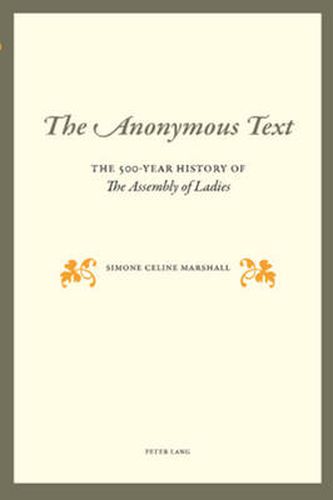Readings Newsletter
Become a Readings Member to make your shopping experience even easier.
Sign in or sign up for free!
You’re not far away from qualifying for FREE standard shipping within Australia
You’ve qualified for FREE standard shipping within Australia
The cart is loading…






One of the most intriguing features of The Assembly of Ladies, an anonymous fifteenth-century Middle English poem, is that it has remained in print in anthologies for over 500 years. Why would a poem about courtly love remain so popular for so long? This book analyses the literary and historical publishing evidence about The Assembly of Ladies, to show that the poem has remained in print not for its literary merit, but because its anonymity has allowed it to be appropriated by editors for their own particular social and political causes. The book draws together textual, contextual, and intertextual evidence about all twenty editions of The Assembly of Ladies. By examining closely how and why a single text is or has been included in canonical traditions over time, this study not only reveals the material presence of the text in various traditions but also brings to the foreground the categories scholars continue to use while defining or imagining those traditions.
$9.00 standard shipping within Australia
FREE standard shipping within Australia for orders over $100.00
Express & International shipping calculated at checkout
One of the most intriguing features of The Assembly of Ladies, an anonymous fifteenth-century Middle English poem, is that it has remained in print in anthologies for over 500 years. Why would a poem about courtly love remain so popular for so long? This book analyses the literary and historical publishing evidence about The Assembly of Ladies, to show that the poem has remained in print not for its literary merit, but because its anonymity has allowed it to be appropriated by editors for their own particular social and political causes. The book draws together textual, contextual, and intertextual evidence about all twenty editions of The Assembly of Ladies. By examining closely how and why a single text is or has been included in canonical traditions over time, this study not only reveals the material presence of the text in various traditions but also brings to the foreground the categories scholars continue to use while defining or imagining those traditions.